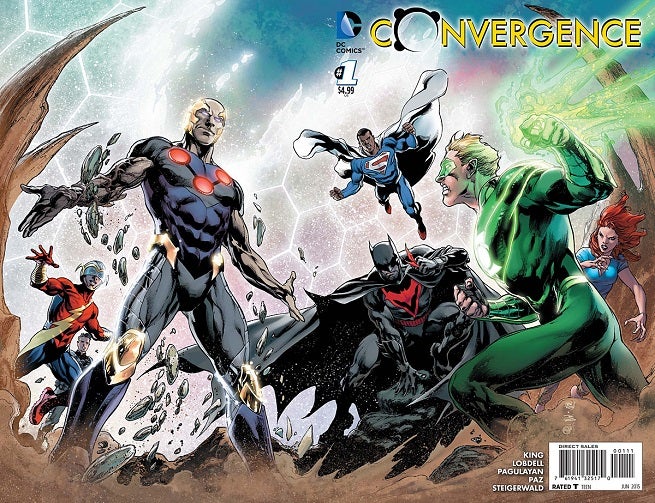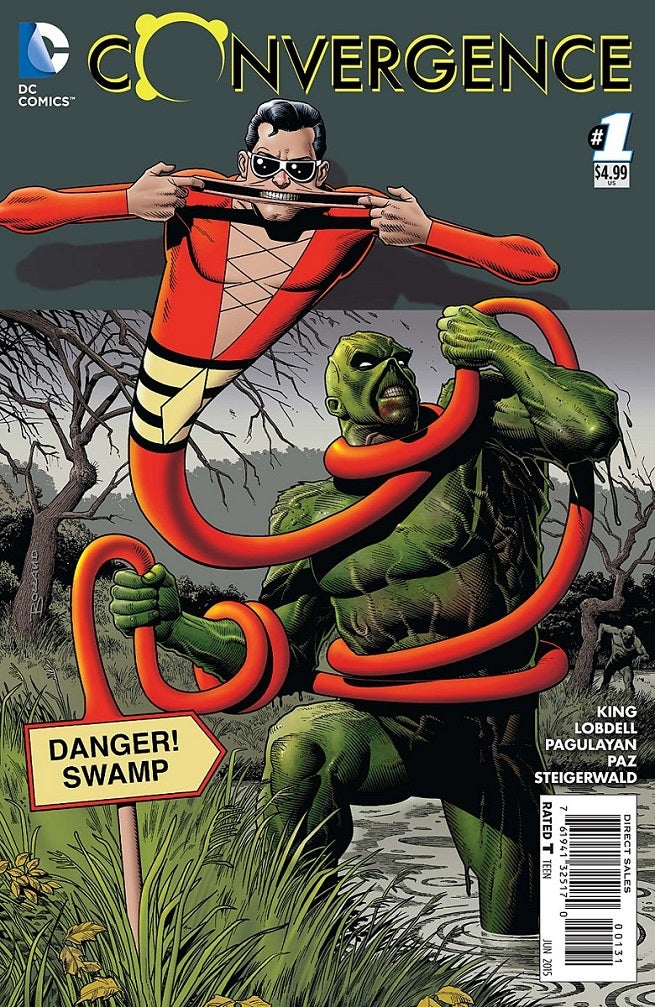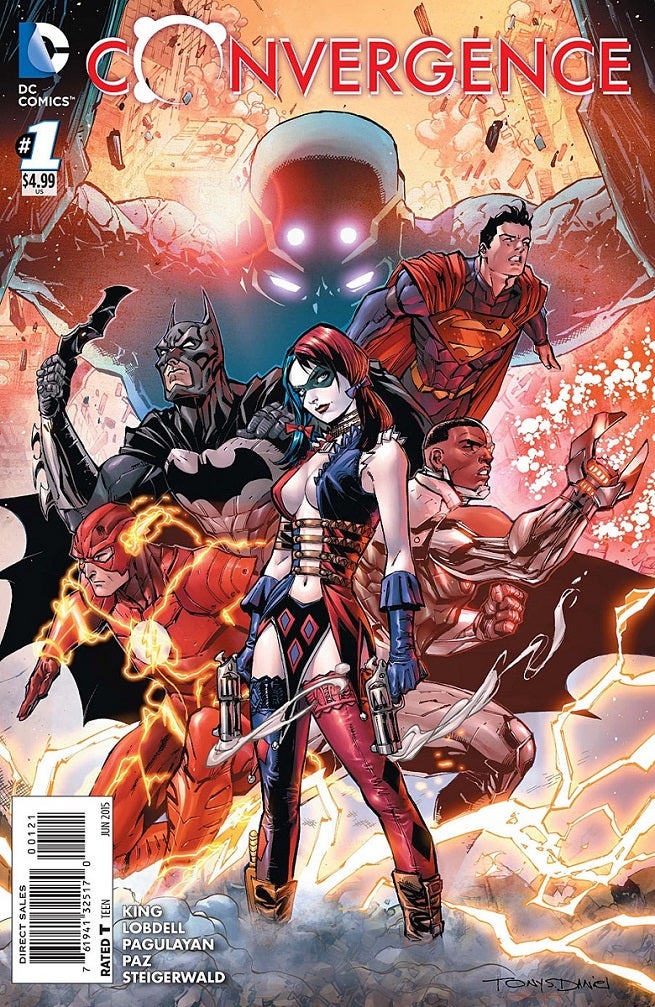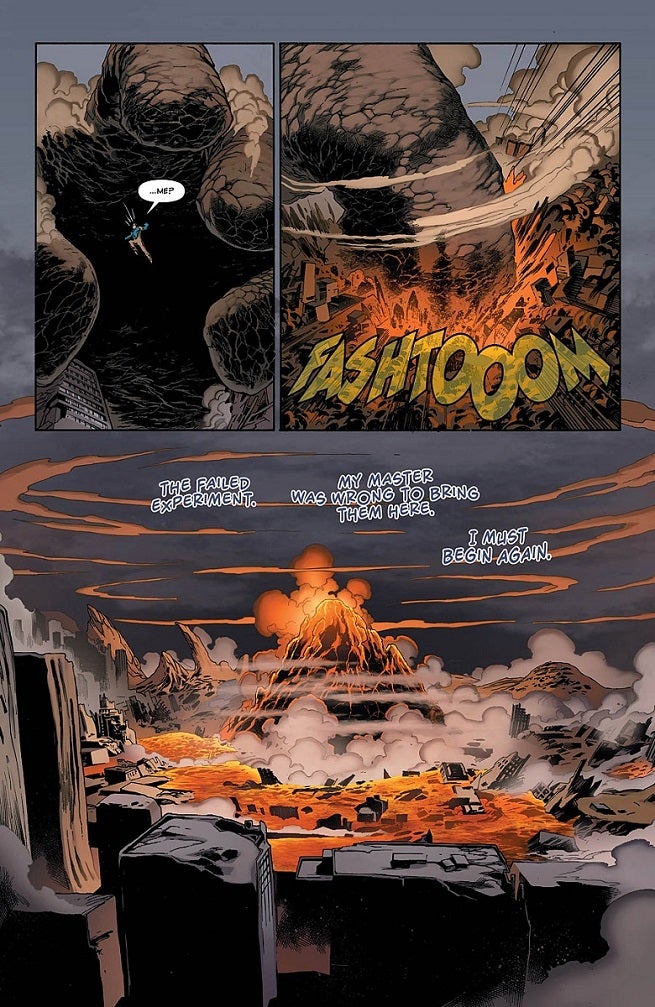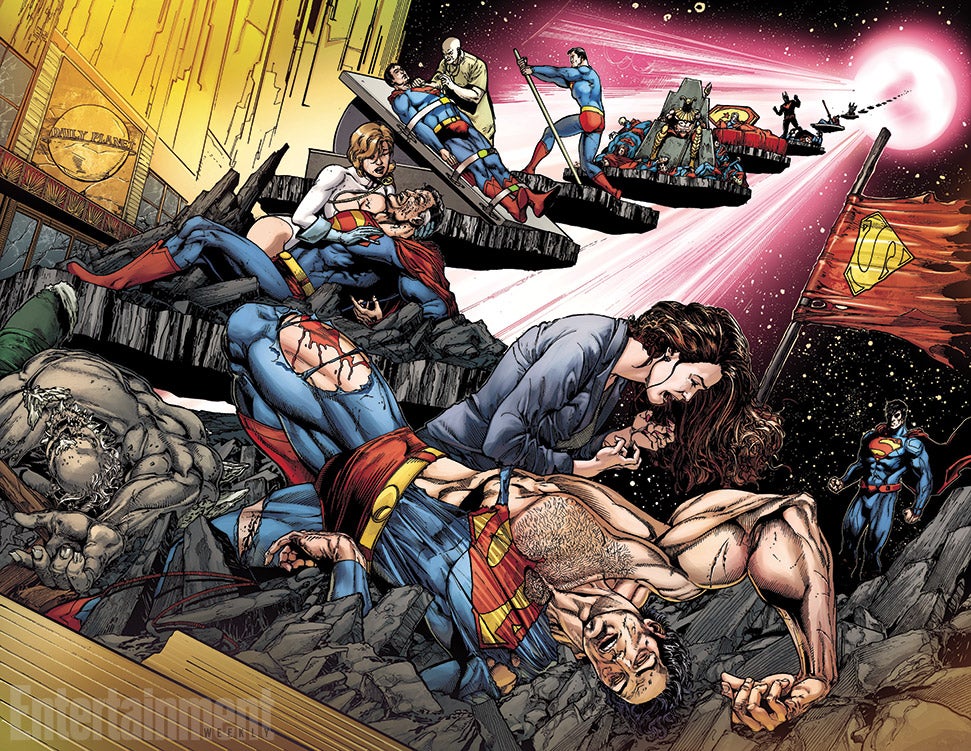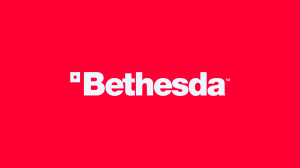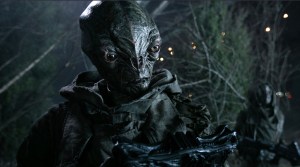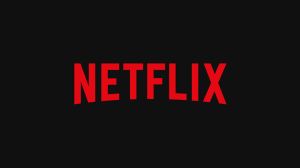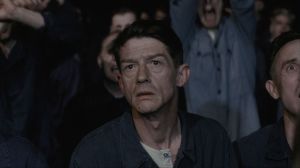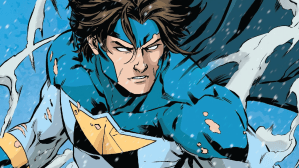Videos by ComicBook.com
Today, DC Entertainment launched their Convergence event, putting the post-Flashpoint world of the last three years on hold to celebrate thirty years since Crisis on Infinite Earths with an 8-issue, weekly miniseries that will see superheroes from every era and every world of DC’s history and multiverse come together and battle both each other and the villains for dominance.
The series is written by Jeff King, best known for his television work on shows like Stargate SG-1 and White Collar, making his DC debut in a miniseries that centers on the heroes of Earth-2, whose world was seemingly conquered completely and most of its inhabitants eradicated at the end of last week’s Earth 2: World’s End. There are also forty monthly series, ten per week, which will be published starting today, but the events of those series can be enjoyed separately from the main series and vice versa.
King joined us for the first in a weekly series of interviews breaking down the approach and events of the main Convergence series.
Convergence Zero HourYou know, I did. I was especially lucky to be standing on the shoulders of giants for this one becuause by the time I came to it, Dan and Brian Azzarello and Scott Lobdell and Scott Snyder and of course Geoff Johns and everybody in editorial, Dan DiDio and Marie Javins, had all be working on it for a while and a lot of the monthly books especially had been commissioned and there was a storyline already existing for the main event.
When I came to it, what I was bringing and what DiDio I think was looking for was that experience of being in writers’ rooms at the beginning of big world-spanning universe-spanning stories like Stargate SG-1 — I was on staff there in the first season — or Continuum — I ran the show there with Simon Barry before he took it over. That experience really prepared me for what you need to do in balancing the intimate and the epic.
Taking a huge story with, in this case, combining 75 years of DC history into an event and pulling it all together but in this case keeping it through the eyes of characters who could help tell the story on an emotional level. I had a lot of time talking to Dan Jurgens and then as Dan and Marie were talling me the story, I met a couple of times with Brian Azzarello and they all helped me along the way immensely.
That was something that was already on on board with DC. They had been laying the foundations of that since the beginnings of Futures End and World’s End, so that will give you some sense of the scope of thinking that had gone into it by the time I got there.
The #0 issue came about after we started in on the storytelling when we realized that setting the table and wrapping up the events of Doomed and filling in Superman’s missing hours when he came back into Action Comics #35 were stories we wanted to tell, but also introducing Brainiac and the world.
By the time we got to #1, for me the real defining moment was filling in the characters on that gorgeous Ivan Reis and Joe Prado cover for #1 where you see Alan Scott, Val Zod, Earth-2 Jay Garrick, the New 52 Jay Garrick, where you see Dick Grayson and of course you see somebody who we thought was dead which is Yolanda Montez, who had been the avatar of the red and who we last saw getting crushed under a brick wall in the Parademon attack of Apokolips destroying the earth. You also see Thomas Wayne, who in the end of World’s End, got the chance to say something to Huntress that kind of brought grandfather and granddaughter back full circle.
I’m glad you asked that question because for me, some of those scenes in the first issue when all the characters are arriving on Telos for the first time, those are the first scenes that I wrote. A lot of storytelling changed around them but those scenes never changed.
I think what I discovered about Dick, because I didn’t know the character that well and the Tom King/Tim Seeley run hadn’t started yet, I discovered that he was an everyman, he was a father that I could understand having lost his wife and his son. He was not happy to be there; he was ripped away from his home and ripped away from everything that was familiar and he was feeling really powerless to do anything about it, and I could really relate to that. I felt like that was something that anyone could feel. Similarly with Yolanda Montez, she’s been for all intents and purposes dead. She’s been trapped, she’s been in this state of death that overtook her when Earth was being consumed by Apokolips. For for her to get a second chance at life, I also really felt simpatico with that.
I’m fighting for my Earth-2 characters and for their journey. Following Val-Zod on his journey from starting out as a prisoner of Terry Sloane and being a pacifist by instinct and someone who is almost afraid of his own shadow by the time we meet him and turning into a gladiator-warrior by the time we meet him in Convergence. Or Thomas Wayne, who is almost a Batman who was never meant to be. In some ways he’s kind of the ultimate Elseworlds character because on that day in the alley it was his son who was shot instead of him and so all of that regret and all of the things that have kind of propelled him to be the man he is today are things that are raging beneath the surface of the character.
And then you have Alan Scott, who has basically lost a world to which he is intimately and viscerally tied. How is he going to overcome that? When we first see him arriving on Telos, of course, he’s powerless because he’s no longer connected to the Green. And that’s a power and a responsibility that he just got the mantle of at the end of World’s End. So what do you do when you become a god and then you’re stripped of your powers?
You’ve picked up on something that Telos has been the keeper of these cities on Brainiac’s planet for all of the years they’ve been together outside of time and space, and he’s always had the presence of Brainiac and Brainiac’s mission statement to guide him. And now he has for the first time, freedom. And so what choices is he going to make, and how much is he going to service his own needs and desires and how much is he going to continue to follow the pattern that has been laid out for him? And that conflict is going to play a central role in the unfolding of the story.
I find there’s a detachment in the way Telos talks about his guests later on that we don’t get about the Earth-2 characters, too. Is it safe to say that these anomalies are a big part of his finding his own agenda? They’re breaking his routine, after all…
Yes. They are the random element. They are the unexpected variable in what has been to this point from Telos’ perspective a very controlled experiment. It’s also, in a funny way, the first time that he’s experiencing interaction with humans and metahumans, not looking at them through glass. So he’s feeling those interactions and those emotions up close and personal and he’s being forced to confront his own feelings and thoughts and emotions in a way that he hasn’t before.
Final Crisis Crisis on Infinite EarthsThe way to think about it is, many of the worlds you’re going to meet not only during the main story but also during the montly books, are worlds from that Crisis or from Zero Hour or from Flashpoint.
Those worlds kind of embody those moments. Inevitably those characters or their interactions with each other are going to bring those elements into the story and as the layers of this unfold through the later issues, you’re going to see more and more of that start to happen.
In fact, I was just on the phone with DiDio today talking about #8 and what we’re building to is something pretty extraordinary.
I think part of that was, even though we’re telling a very intimate story between a very small group of people, it’s still got an extraordinary scope. And so that storytelling was pretty central to feeling and understanding the enormity of the situation that the characters had just found themselves in the middle of.
In the #0, Superman breaking out of what we’re going to ultimately reveal is Brainiac’s stronghold and finding himself on a planet and being a stranger in a strange land, or these six heroes being ripped from where they were having issues with each other and confronting a living planet itself, that felt like it called for scope.
Fortunately, Carlo Pagulayan, who draws issue #1 and #2 and who is absolutely, boots-down, knock-out and extraordinary artist, I think you’ll agree he delivered some magnificent pictures and that was what we were taking advantage of, too, is that beautiful art style that he and Stephen Segovia have. You’ll see that in #3 and #4 as well; the scope’s magnificent.
Were there any earths that you, as a reader, wanted to make sure you got into the story, or was that mostly mapped out ahead of time?
No, in fact, aside from the core Earth-2 group — and at the beginning I did have the opportunity to either add or subtract from that group and Daniel Wilson and Mike Cotton were very accommodating in helping us do that out of World’s End — but from there, this is even more of a spoiler than I can give you at this point, but where we’re heading in terms of addressing the previous events of the DC Universe going back to Crisis, definitely meant that there were a few key stories that we were going ot re-address and readers are going to eventually want to keep their eyes on Superman and Lois; they’re going to want to keep their eyes on Hal Jordan/Green Lantern/Parallax; they’re going to want to keep their eyes on Barry Allen; and they’re going to want to keep their eyes on Supergirl. And if you put all those characters into a box and mix them together, going back to figure out their shared stories and common origins might lead you go certain conclusions. I think I’ll stop talking there.

